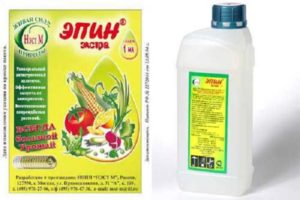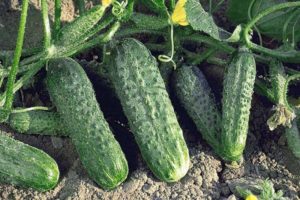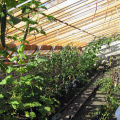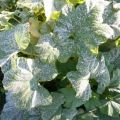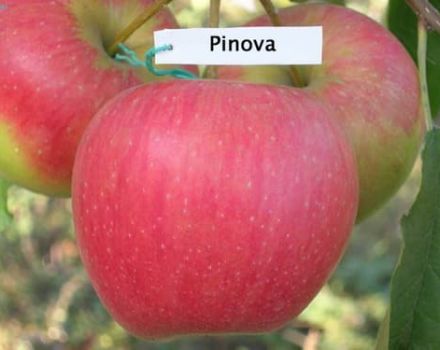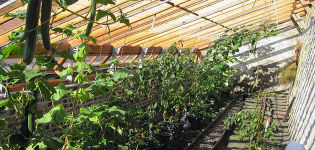How can you shelter cucumbers from the cold in the open field, how to feed and help them
The desire to get the harvest faster sometimes turns sideways for the summer resident. Due to the vagaries of the weather, a hurried gardener often does not know how to shelter cucumbers from the cold in the open field. Delay in the coming night frosts threatens with a complete loss of the crop.
Temperature regime
Each garden crop has threshold temperature values, when violated, the plant stops growing, it can get sick and die. The summer resident needs to know at what air temperature of a thermophilic cucumber problems can begin, and the vegetable does not grow.
The table lists the temperature thresholds (air, soil) and associated problems:
| Air temperature | Soil temperature | Problem |
| Average daily temperature below 15 ° C | Yields are falling, plantings suffer from powdery mildew | |
| At night temperatures below 8 ° C for more than 5 days | Cucumber seedlings may die | |
| Below 12 ° C | Cucumber seeds do not germinate well, seedlings stop growing, yellowed leaves appear | |
| 6 - 8 ° С for 1 night | Without consequences | |
| During the day from 23 ° C, at night from 15 ° C | Above 15 ° C | Seeds sprout within a week, the seedlings are actively growing |
Waiting for frost
In spring, the problem of night frosts is especially relevant for summer residents who live in the city all week. All gardening work must be done over the weekend and make sure that the cucumbers do not freeze.

It is easier to protect cucumbers in a greenhouse from freezing. If the greenhouse has electricity, you can install an electric heat gun. If it is not available, use other types of fuel and install for frost protection:
- gas heater;
- air heater for diesel fuel;
- wood-fired oven for greenhouses.
Protecting cucumbers outdoors is more difficult. With the early planting of cucumbers in the garden with seeds or seedlings, it is worth equipping not ordinary ridges on the ground, but recently fashionable warm ridges or simpler in construction - dung.
Manure ridge
A manure ridge in cold weather will provide not only warmth, but also the nutrients necessary for growth. It must be done wisely. Young plants can be destroyed on the bed in the phase of its active combustion.

It is necessary to build a ridge of manure 2 weeks before sowing seeds. Manure must be folded into a high ridge, spilled. To make it start burning faster, you can cover the structure with cellophane.
When the ridge starts working, it will be visible by the steam coming from it. After 2 days of active combustion, you can plant seeds in holes filled with earth. The thickness of the soil should be at least 30 cm. While there is a threat of low temperatures, cover young seedlings with film or spunbond so that they do not freeze.Manure-grown cucumber lashes rarely suffer from disease.
Warm ridge
A warm ridge is an analogue of a manure ridge, only as biofuel can be:
- food waste;
- leaves;
- branches;
- grass;
- tops.
Seedlings of cucumbers on an organic pillow, covered with foil on top, are not subject to frost. The effect of the construction made is observed in a rainy summer. Organic matter overheats, releases the necessary heat and nutrition for growth.
A decoratively decorated warm ridge will facilitate the care of cucumbers and at the same time decorate the summer cottage.
The advantage of warm ridges:
- it is convenient to fix arcs and covering material;
- the soil warms up much faster, so you can sow seeds earlier;
- less weed;
- drainage in the form of large branches eliminates stagnant water, promotes the development of the root system;
- dying organic matter warms up the soil at night, which stimulates nighttime growth.
Arcs plus covering material
Cheap sets for summer residents, equipped with plastic arches and covering material, can protect cucumber whips in cold weather, not only in a greenhouse.
Having installed them above the holes in the spring, the gardener copes with the task of how to protect cucumbers during the May frosts. A dense covering material saves seedlings from freezing.
How can cucumbers shelter from the cold in the open ground arcs and covering material, summer residents share on forums and in their videos. Their advice can help many preserve heat-loving plants.
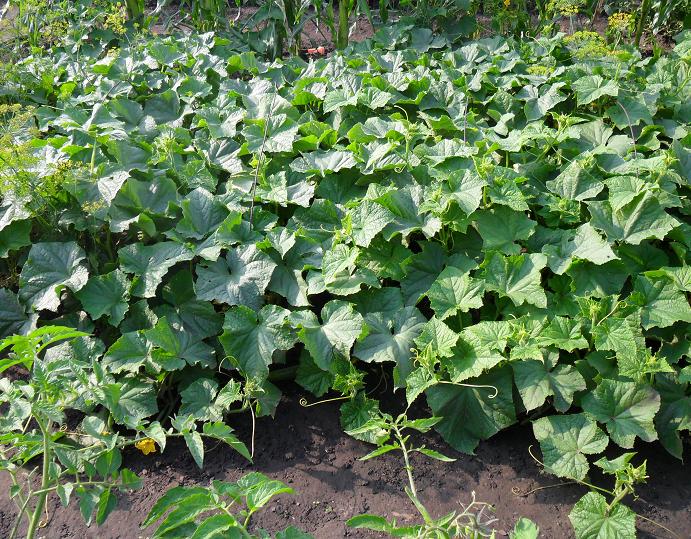
You need to buy a white spunbond to shelter plants from the spring cold snaps. The optimum density of the nonwoven fabric is 23 g / sq. m. This strength is enough to protect from the cold and withstand the pressure of the wind.
Saving cucumbers
If you are unlucky and the frost grabbed cucumber leaves, you need to revive them. For such a case, every summer resident should have an "Epin". A drug that will help if the cucumbers:
- froze;
- leaves turned yellow for some reason;
- that day it rains and is noticeably colder;
- attacked by aphids or other pests.
How to help cucumbers with Epin is indicated in the instructions. A single treatment restores the plant's immunity. The main thing is not to use fertilizers for two weeks until the plant leaves by itself. Be sure to buy a growth biostimulant.
Help cucumbers with any popular remedy:
- Zircon;
- Narcissus;
- Amulet;
- Silk.
With the help of these products, harmless to people and vegetables, you will quickly restore cucumber lashes. It is important that during processing the solution gets on most of the leaves.
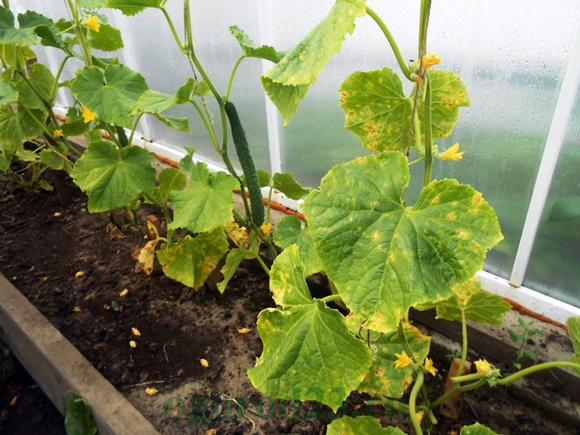
Most vegetable growers are faced with yellowing of the leaves. Experienced gardeners know how to feed cucumbers during illness, how to save the whips from rot and pests.
Fertilizers
Prolonged summer cold snap is bad for cucumbers. The tips on the leaves brighten, the formation of ovaries slows down. In this case, they are fed with a solution of carbamide or urea.
The solution is prepared just before use. Bred 1 tbsp. l. preparation in 10 liters of settled water. The weather during processing should be dry, cloudy.
We will reanimate in this way several times. The interval between dressings is 3 days. When the leaves turn dark green, you can stop saving the cucumbers.
Simple folk ways
It will be interesting for novice vegetable growers to learn how to care for cucumbers using simple folk methods. Did you find out that the temperature will be below zero at night? What to do if there is no covering material at hand and no time to build a shelter?
Picking up herbs or branches, you can take straw and throw it on young cucumbers, and lower those that are higher and tied to the trellis. A layer of mulch will keep you from freezing. Rake it off in the morning, but do not remove it from the ridge.It is needed for further care, will help to retain moisture in the soil and will not allow the soil to freeze.
If there is an unnecessary roll of roofing material somewhere in the shed, you can use it. Build bags for sheltering young cucumber seedlings. They will need to be cleaned in the morning, and at night they will serve as excellent protection from a small subzero temperature.
You can help the plant during a period of prolonged bad weather with the help of boric acid. Dilute a bag of powder (5 g) in hot water and pour into 10 liters of water. Cucumbers can be sprayed with this solution after sunset.
Such processing will protect cucumber plantings from diseasesthat occur in bad weather:
- bacteriosis;
- powdery mildew;
- root rot.
Variety selection
You need to think about how to grow cucumbers in the open field not in spring, when it's time to sow seeds, but in autumn or winter. To do this, the summer resident needs:
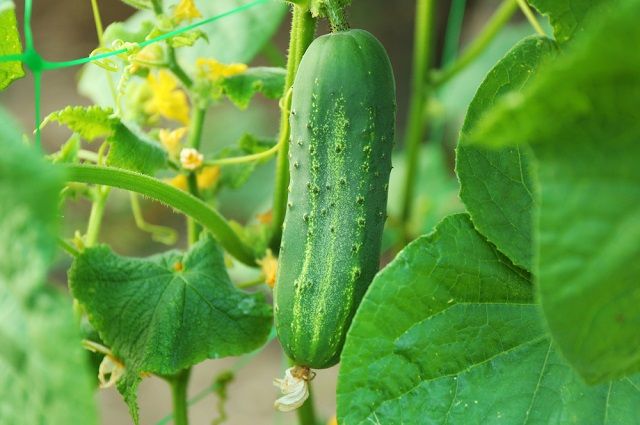
- Prepare a landing site in the fall. Build a warm bed or greenhouse for early production.
- Before the onset of spring, purchase a covering material of the required size and density. For protection from bad weather, a spunbond 35 microns thick is suitable.
- Select cucumber seeds with characteristics that are appropriate for the climate.
You can choose from the ten most popular, bred specifically for open ground:
- April F1 - cold-resistant, mid-season, fruits are not small, used for making light salads.
- Masha F1 is the queen of the market. This variety is loved to grow for sale because of its early maturity, good taste and excellent immunity. The fruits are lumpy, good in pickles.
- Zozulya F1 is a cold-resistant, early ripening hybrid that gives good yields in exhaust gases and in greenhouses.
- Spring F1 - a hybrid has long been used by summer residents of different climatic zones. The variety is cold-resistant, fruitful, rarely sick, good in harvesting.
These varieties can be recommended for novice growers. Having mastered the technology of growing cucumbers with seeds in OG, it is possible to expand the collection and study the methods of propagating the culture through seedlings.
Conclusion
Using modern biological products and fertilizers, we grow cucumbers in any weather. Covering material, plastic arches, PVC film will help to cope with spring cold snaps and summer bad weather.
